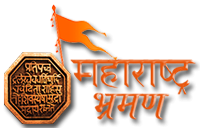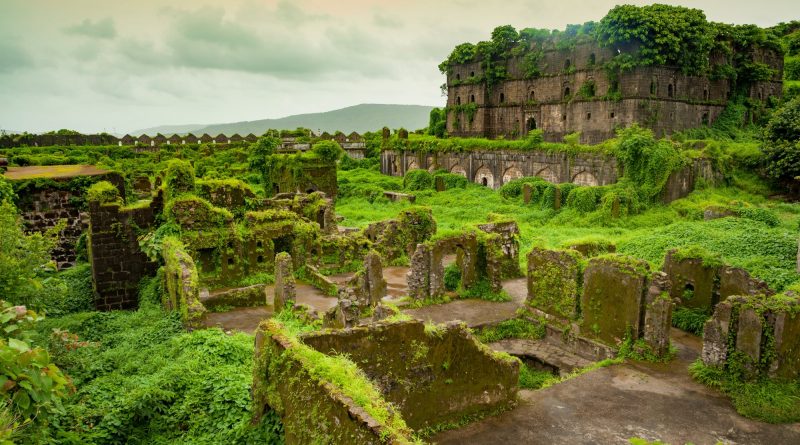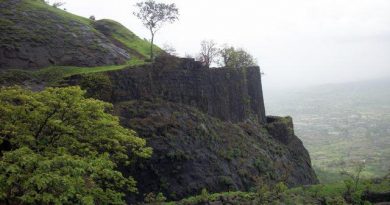Murud-Janjira Fort
Murud-Janjira is the local name for a fort situated on an island just off the coastal village of Murud, in the Raigad district of Maharashtra, India.It was occupied by the Siddis and is famous for being the only fort along India’s Western coast that remained undefeated despite Dutch, Maratha and English East India Company attacks.
The word Janjira is not native to India, and may have originated after the Arabic word Jazeera, which means an island. Murud was once known in Marathi as Habsan (“of Habshi” or Abyssinian). The name of the fort is a concatenation of the Konkani and Arabic words for Island, “morod” and “jazeera”. The word “morod” is peculiar to Konkani and is absent in Marathi.
Major features:
Murud-Janjira Fort is situated on an oval-shaped rock off the Arabian Sea coast near the port town of Murud, 165 km (103 mi) south of Mumbai. Janjira is considered one of the strongest marine forts in India. The fort is approached by sailboats from Rajapuri jetty. The main gate of the fort faces Rajapuri on the shore and can be seen only when one is quite close to it. It has a small postern gate towards the open sea for escape.
The fort has 19 rounded bastions, still intact. There are many cannons of native and European make rusting on the bastions. Now in ruins, the fort in its heyday was a full-fledged living fort with all the necessary facilities, e.g., palaces, quarters for officers, mosque, two big fresh water tank, etc. On the outer wall flanking the main gate, there is a sculpture depicting a tiger-like beast clasping elephants in its claws. There are prominent “ASHOK-CHAKRAS” on all major gates of the fort Janjira. There are images of playing elephants, lions etc.
The palace of the Nawabs of Janjira at Murud is still in good shape. The palace was self-sufficient and must have support of the locals. It has secret gates to hide and escape. Its construction is unique and very strong.
Originally the fort was a small wooden structure built by a Koli chief in the late 15th century. It was captured by Pir Khan, a general of Nizamshah of Ahmednagar. Later, the fort was strengthened by Malik Ambar, the Abyssinian-origin Siddi regent of Ahmednagar kings. From then onward, Siddis became independent, owing allegiance to Adilshah and the Mughals as dictated by the times.The last surviving prince Roby Philip lives in New york.
History:
The fort was originally built in 15th century on a smaller scale by a local Maratha-Fisherman Chieftain- Ram Patil to protect his people from pirates/ thieves and was known as ” Medhekot”. He was a fearless man with independent bent of mind who was quite popular with the local fishermen. Nizam, the ruler from Ahmadnagar sent one of his Siddi commanders Piram Khan, who came with three ships armed with necessary weapons and soldiers and captured the fort. Piram Khan was succeeded by Burhan Khan, who demolished the original fort and built an impregnable much bigger, 22 acre, stone fort sometime in between 1567 and 1571. The fort was called ‘Jazeere Mahroob Jazeera ‘ which in Arabic means an Island. Siddhi Ambersatak was nominated as Commander of the fort.
Despite their repeated attempts, the Portuguese, the British and the Marathas failed to subdue the power of the Siddi’s, who were themselves allied with the Mughal Empire. Major historical figures from Murud-Janjira include men such as Yahya Saleh and Sidi Yaqub. The fort has a tunnel which opens in Rajpuri. The fort was made by a mixture of lead, sand and gul.
The Marathas led by Shivaji attempted to scale the 12 meters high Granite walls but failed in all his attempts. His son Sambhaji even attempted to tunnel his way into the fort but was unsuccessful in all his attempts.
In the year 1736, Siddis of Murud-Janjira set out to recapture Raigarh from the ravaging forces of Baji Rao, on 19 April 1736, Chimnaji attacked the gathering forces in the encampments of the Siddis during the Battle of Riwas near Riwas, when the confrontation ended 1500 Siddi’s including their leader Siddi Sat were killed. Peace was concluded in September 1736, but the Siddis were confined to Janjira, Gowalkot and Anjanwel.
Must do – Move within the fort and see various sculptures and architectural splendor.
Must see – Water tanks, stone carving, tombs, guns, the gateways.
Nearby Hotels:
1.Golden Swan Beach Resort.
2.Sea Shell Resorts.




